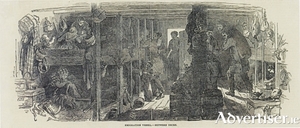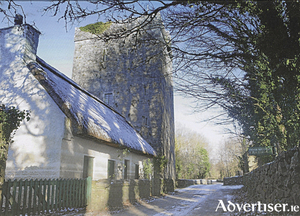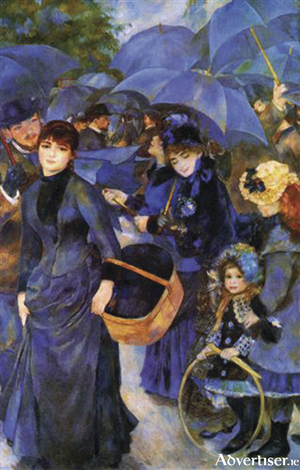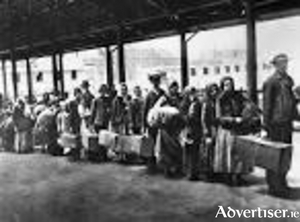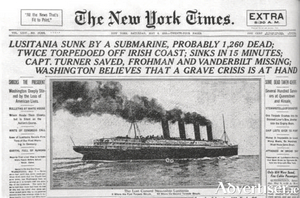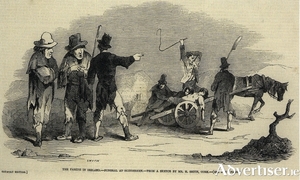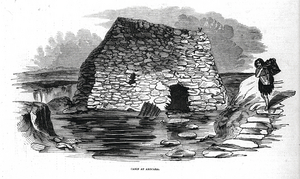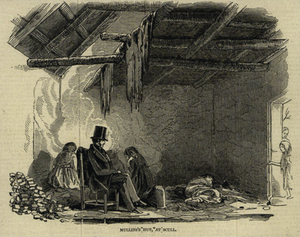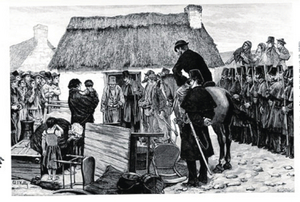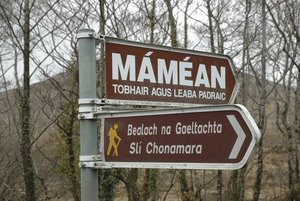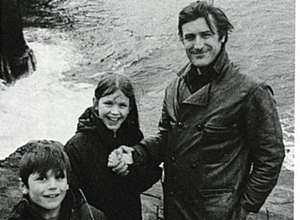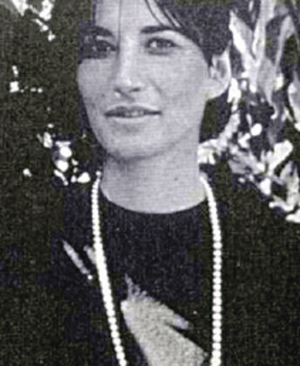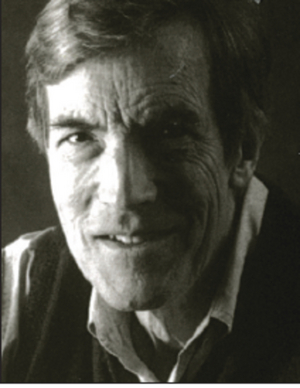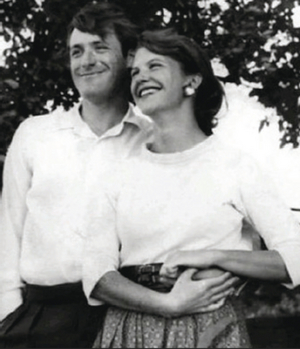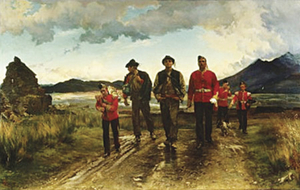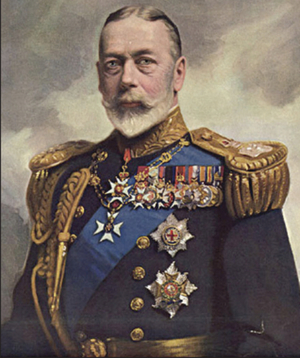Getting rid of the troublesome women
Thu, Jul 02, 2015
One of the remedies in dealing with overcrowding, and rebellious behaviour from frustrated and angry women in the workhouses during the famine years, was assisted emigration. This was done on a massive scale. Between 1848 and 1850, 4,175 women were sent direct from the workhouse system to Australia. This was in addition to the thousands already sent away assisted by landlords and other schemes to clear the land of unproductive tenants. The only cost to the individual Poor Law unions was for new clothes, and travel expenses to Plymouth, from where the girls embarked to the colony.
Read more ...Ballylee - ‘To go elsewhere is to leave beauty behind’
Thu, Jun 04, 2015
In 1960 Mary Hanley forced open the wedged shut door of the cottage at Thoor Ballylee. She walked into the large damp room. For 12 productive and happy summers, the cottage and its adjoining Norman tower had been the home of WB Yeats , his wife George Hyde Lees, and their two children Anne and Michael. Now, however, the floor was covered with manure. For years it had been used as a cow barn. Pulling aside stones that had blocked exits to keep the cattle enclosed, Mary walked into the dining room, with its magnificent enlarged window overlooking the Streamstown river as it races under the four-arched bridge.
Read more ...Thoor Ballylee - The perfect home for a poet
Thu, May 28, 2015
In August 1896 WB Yeats and his friend Arthur Symons went on a tour of the west of Ireland. The poet was 31 years of age. They stayed with Edward Martyn at Tulira Castle, Ardrahan, visited the Aran Islands, and Yeats made his first visit to Lady Gregory at Coole Park.
Read more ...DruidShakespeare - A magnificent presentation of four great plays
Thu, May 14, 2015
Let us sit upon the ground
And tell sad stories of the death of kings,
Some awful things that George Moore said...
Thu, May 07, 2015
You might think that those at the core of the Irish literary renaissance at the beginning of the 20th century, were one big happy family beavering away in their rooms at Lady Gregory's home at Coole, Co Galway. In those early days it was a house full of voices and sounds. Sometimes you heard WB Yeats humming the rhythm of a poem he was cobbling together; or the click-clacking of Lady Gregory's typewriter as she worked on another play for the Abbey. There was the sound of the Gregory grandchildren playing in the garden; the booming voice of George Bernard Shaw, as he complains that he is only allowed to have either butter or jam on his bread, but not both to comply with war rations (He cheated by the way. He put butter on one side of his bread, and when he thought no one was looking, piled jam on the other!); or the voices of the artist Jack Yeats and JM Synge returning from a day messing about on a boat calling out to a shy Sean O'Casey to come out of the library for God's sake and enjoy the summer afternoon.
And then there was the flamboyantly Bohemian Augustus John, who was her son Robert's best man at his wedding. Everyone liked Augustus, despite his childishness. He loved to pinch maids' bottoms as he swept by ("Oh! Mr John!"). It was unlikely, however, he ever pinched Marian. She was the kindly but formidable Lady Gregory's right-hand 'man' in all domestic arrangements. Marian saw that guests dressed properly for meals, which were always served punctually. Despite his wickedness, she had a soft spot for Augustus. Augustus would climb to the top of the highest trees at Coole, and lie on the uppermost branches swaying in the breeze. Marian's voice could be heard shouting up to him to come down or he'd be killed, and that dinner was on the table.
Read more ...How Ireland lost thirty nine famous paintings
Thu, Apr 30, 2015
The sinking of the Lusitania on May 7 1915, off the Cork coast, by a German submarine electrified Ireland, Britain and America. In Ireland, the fact that German submarines were lurking so close to the Irish shore, added fuel to the propaganda that Germany was planning to invade the country. It spurred recruitment into the armed forces. In Britain, the shameful practice of using passenger liners to carry munitions across the Atlantic without telling the passengers they were in effect travelling on a British war ship, was to come to an end.
Read more ...Annie Kelly, and her quest for love
Thu, Apr 23, 2015
Annie Kelly was just 19 when all her dreams appeared to be coming true. Annie was one of 11 children living with her widowed mother at Newgrove, Mountbellew, Co Galway. Her boyfriend, William Murphy, and her brother Thomas had earlier emigrated to Boston. Annie and William were pledged to be married just as soon as Annie got the money to follow him there. Full of excitement the young woman later sailed from Liverpool on the Cunard liner the Lusitania arriving in New York on April 24 1915.
Read more ...‘The Hun was murdering Irish people in very waters of Cork’
Thu, Apr 16, 2015
The British ocean liner RMS Lusitania, famous for its luxurious accommodations and speed capability, primarily ferried people and goods across the Atlantic Ocean between the United States and Great Britain. On May 1, 1915, the Lusitania left port in New York for Liverpool to make her 202nd trip across the Atlantic. On board were 1,959 people, 159 of whom were Americans.
Read more ...The Great Famine - A watershed in Irish history
Thu, Apr 09, 2015
During the seven years of the Great Famine approximately one million people died. A million more emigrated causing Ireland’s population to fall by between 20 and 25 per cent. The initial cause of famine was a potato disease which ravaged potato crops throughout Europe during the 1840s.
Read more ...Daniel O’Connell - A man not without flaws
Thu, Apr 02, 2015
It is said that all political careers end in failure. The great Daniel O’Connell’s final slide into earthly oblivion was heralded by the now familiar sight of journalists descending on his estate at Derrynane, Co Kerry, the year before he died. They had scented a whiff of scandal, and like today, doorstepped him.
Read more ...A ‘selfish, perverse and turbulent’ people
Thu, Mar 26, 2015
As the Great Famine strengthened its fearsome grip on Ireland in the late 1840s and early 1850s, the people were doubly unfortunate that Charles Trevelyan, the Assistant Secretary to the British Treasury, had responsibility for Irish Famine relief.
Read more ...How artists changed Britain’s perception of the Great Hunger
Thu, Mar 19, 2015
Although the Great Irish Famine, which devastated Ireland in the 1840s and early 1850s, happened at a time when photography was only in its experimental stage, we still have vivid images of the appalling suffering that the vast majority of the people endured. A suffering that was heightened by systematic neglect by government, the total absence of a comprehensive humanitarian plan of relief, and the law of the land which only supported the rights of landlords.*
Read more ...Mam Eán - A name that ‘speaks of the world’s wonders’
Thu, Mar 12, 2015
That great observer of landscape Tim Robinson reminds us that Connemara is full of saints. Perhaps there isn't a saint in the place today, but they were certainly there in profusion in earlier times. Looking around him from the heights of Errislannan, near Clifden, Tim observes that practically every one of the headlands and islands that he sees has its saint. There is St Roc at Little Killary, St Colmán on Inishboffin, St Ceannanach at Cleggan, St Féichín in Omey and High Island, and all the saints in the tangled archipelagos east of Carna, Bearchan, Breacán, and Enda; and the obscure Mocán or Smocán of Barr an Doire near An Cheathrú Rua, 'and finally the great St Colm Cille who has all the south Connemara coast under his protection...'
Read more ...The woman who was - ‘fearless’ where the Irish language was concerned
Thu, Mar 05, 2015
Scene: A deserted foreshore. Pier in background, mountains in the distance, sound of sea birds calling, waves breaking on the beach. A beautiful day. Curtain rises on two attractive people holding hands, gazing lovingly at each other.
Read more ...Letter from Ted Hughes to Assia’s sister, Celia Chaikin, April 14 1969
Thu, Feb 26, 2015
Dear Celia, I should have written to you long ago but I’ve felt so absolutely smashed and not capable of talking to any one about what happened (three weeks earlier, her sister Assia had gassed herself, with her four-year-old daughter, Shura,). Your letter was a lot of support to me. I always liked you in your letters, and in what Assia told me about you, and you said just what was needed.
Read more ...Letter from Ted Hughes to his brother Gerald, April 1966
Thu, Feb 19, 2015
This place is a mild paradise for me at present. We moved yesterday, from our sumptuous home, to a much older, wilder place - £2 a week, a house annexed to a big farm (big for this region) at the top of Cleggan bay - right on the west coast.
Read more ...Letter from Ted Hughes to Sylvia Plath’s mother, Aurelia, March 15, 1963
Thu, Feb 12, 2015
Dear Aurelia, It has not been possible for me to write this letter before now...
Read more ...Letter to Sylvia Plath from Ted Hughes (March 1956)
Thu, Feb 05, 2015
Sylvia, That night was nothing but getting to know how smooth your body is. The memory of it goes through me like brandy. If you do not come to London to me, I shall come to Cambridge to you. I shall be in London, here, until the 14th. Enjoy Paris...Ted. And bring back brandy. Two bottles.
Read more ...Two new recruits for the Connaught Rangers
Thu, Jan 29, 2015
This very fine painting ‘Listed for the Connaught Rangers, recruiting in Ireland 1878’, was painted by Elizabeth S Thompson, but following her marriage to Lieutenant General Sir William Butler of Bansha Castle, Co Tipperary, is best known as Lady Butler. It is not only extremely unusual for a woman artist to have so successfully worked in the highly masculine field of military art, but Lady Butler was an exception in many ways. She was an innovator, particularly in her sensitive and humane depiction of the ordinary soldier. Detail was all important. She was a regular visitor to Chelsea Hospital, and other retirement homes for soldiers, to question survivors, sometimes getting them to re-enact a particular scene.
Read more ...Pomp and circumstance, and one unmarked grave
Thu, Jan 22, 2015
On June 12 1922 a very special ceremony took place at Windsor Castle, near London. Following the establishment of the Irish Free State the previous December, five Irish regiments, including the Connaught Rangers, the Royal Irish, the Leinsters, the Munsters, and the Dublin Fusiliers, which had served the British army with exceptional valour at times, were disbanded. It was a day of special significance for both the participants and onlookers.
Read more ...